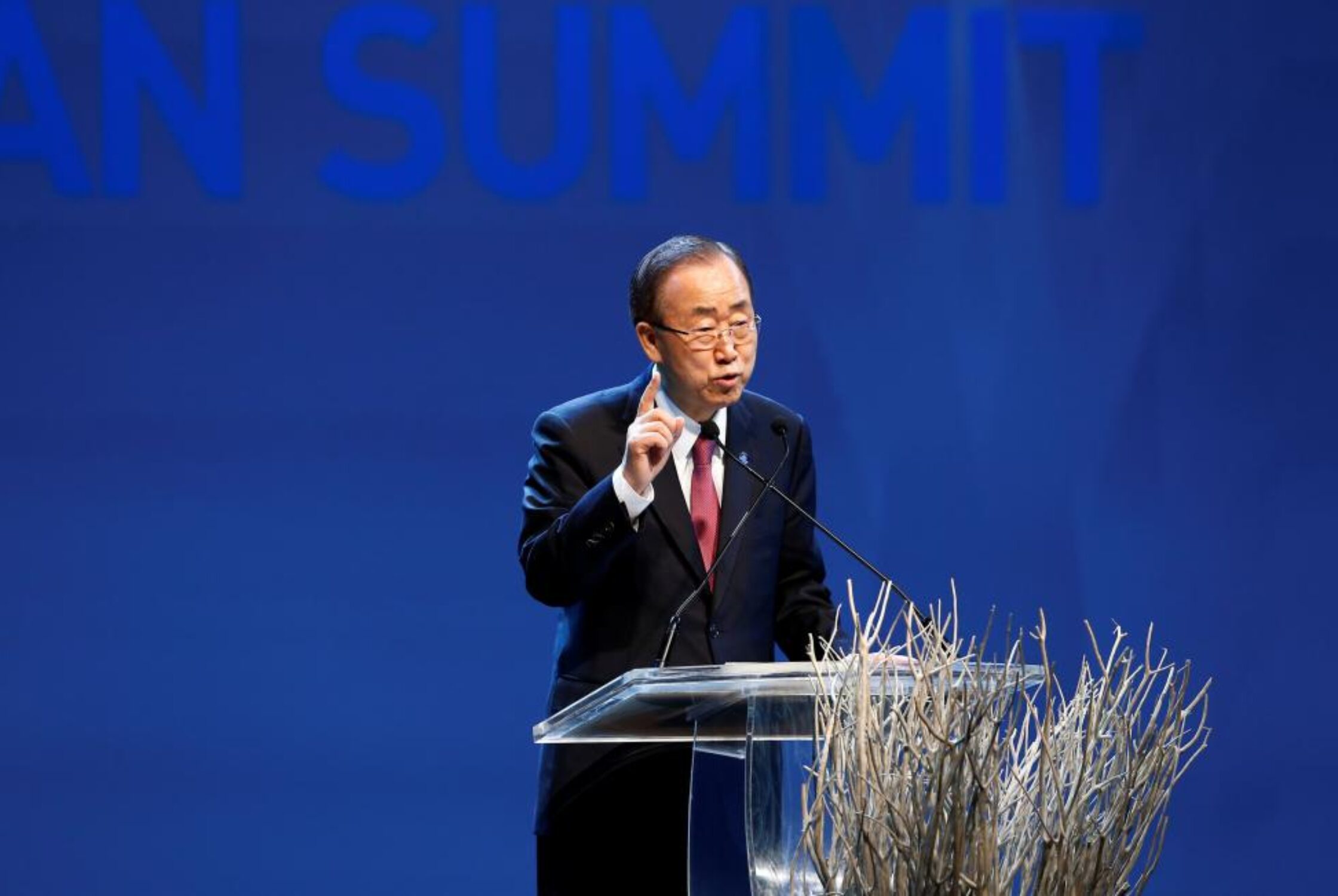Humanitarian crises & climate change: What did the WHS Achieve?

Earlier this week, some 9,000 participants from around the world gathered in Istanbul for the first-ever World Humanitarian Summit (WHS). The Summit was the brainchild of outgoing UN Secretary General Ban Ki Moon who, during his tenure, has witnessed a humanitarian system strained to the point of breaking. Protracted crises in places like Somalia and Afghanistan, the eruption of new emergencies in the Middle East and elsewhere, and more frequent and severe disasters have led to a quadrupling of the number of refugees and internally displaced persons – and an estimated $15 billion shortfall in funding to meet outstanding humanitarian needs. In this context, the goal of the Summit was not only to make aid delivery more efficient and cost-effective, but also to build a more inclusive and diverse humanitarian system that is more responsive to affected people’s needs.
“Climate change continues to cause increased humanitarian stress as it exacerbates food insecurity, water scarcity, conflict, migration and other trends.”
UN Secretary General Ban Ki Moon
While the urgent need to build political will to do more to prevent and respond to conflict was the primary concern of the WHS, the SG’s approach was far broader. One of the notable features of the Secretary General’s report “One Humanity: Shared Responsibility” – which laid out his aspirational expectations for the summit – was its front and center recognition of climate change as a growing driver of humanitarian crises and displacement. The report notes that “[m]ore countries are slipping into fragility, marked by extreme poverty and weak institutions and compounded by natural hazards and climate-induced disasters,” which are becoming “more frequent and intense,” and that “[c]limate change continues to cause increased humanitarian stress as it exacerbates food insecurity, water scarcity, conflict, migration and other trends.”
The report also notes that disaster-related displacement has increased 60 percent since 1970, a trend expected only to increase due to climate change. According to the report, among the areas that require action are the needs to reduce future displacement by preparing for cross-border displacement owing to disasters and climate change, strengthen the disaster response capacities of the most at-risk countries, and support climate vulnerable countries to adapt to the negative consequences of climate change. The report further calls on governments to increase investments in reducing disaster- and climate-related risks to at least one percent of official development assistance by 2020 and to utilize the Green Climate Fund to support activities that build national capacity to reduce climate risks.
For those of us working on the cross section of climate change and humanitarian crises, the report’s recognition of the need to take action to retrofit the humanitarian system to better address hazard- and climate change-related risks as a driver of humanitarian crises was highly welcomed. So what was the upshot?
The good news is the launch of several important initiatives at the WHS aimed at addressing the impacts of climate change on displacement and humanitarian crises. Most notable was the Platform for Disaster Displacement, an initiative of the governments of Germany and Bangladesh. Building on government consensus on possible ways forward to address climate change impacts on displacement and migration achieved under the Nansen Initiative, the goal of the platform is to further enhance cooperation and action to better protect and assist people displaced by disasters and other climate change-related effects. The Platform will draw from a broad range of laws and policies related to humanitarian assistance, human rights, migration management, refugees, disaster risk reduction, and climate change mitigation and adaptation.
It will be impossible to reach the WHS goal of halving the current record numbers of internally displaced by 2030 without a shift in focus from managing disasters to mitigating the risks disasters and climate change pose to humanity.
Another positive initiative from the WHS was the launch of The Global Partnership for Preparedness, which aims to raise an initial $130 million to help 20 of the most climate vulnerable countries improve disaster preparedness by 2020.
In addition, a “Grand Bargain” – an agreement containing joint commitments by donors, the largest international aid groups, and UN agencies to take steps to improve aid efficiency and decrease humanitarian needs – included several commitments that will lend support to improving the humanitarian system’s capacity to better manage climate change impacts on humanity. Most significant is the commitment to support multi-year investments in strengthening the capacity of local and national governments and aid agencies – especially in fragile and climate vulnerable countries – to prepare for and manage weather-related disasters and other climate change impacts. In fact, the commitment in the Grand Bargain to ensure that by 2020, at least 25 percent of humanitarian funding gets into the hands of local and national governments and aid groups (who at present, receive a mere 0.2 percent of humanitarian funds), will go a long way for building local capacity and resilience. In an effort to shrink humanitarian needs over the long-term, the Grand Bargain also includes a commitment to significantly increase investments for prevention, mitigation, and early action.
However, despite vague references to building resilience in fragile contexts, the Grand Bargain falls short of concrete commitments to ensure that more humanitarian funds go to preventing disaster impacts as opposed to responding to them, as called for the Secretary General’s report.
As rightly noted by the head of the UN Office for Disaster Risk Reduction, Robert Glasser, it will be impossible to reach the WHS goal of halving the current record numbers of internally displaced by 2030 without a shift in focus from managing disasters to mitigating the risks disasters and climate change pose to humanity.
Top photo: U.N. Secretary-General Ban Ki-moon speaks during the opening ceremony of the World Humanitarian Summit in Istanbul, Turkey, May 23, 2016. Photo: REUTERS/Osman Orsa